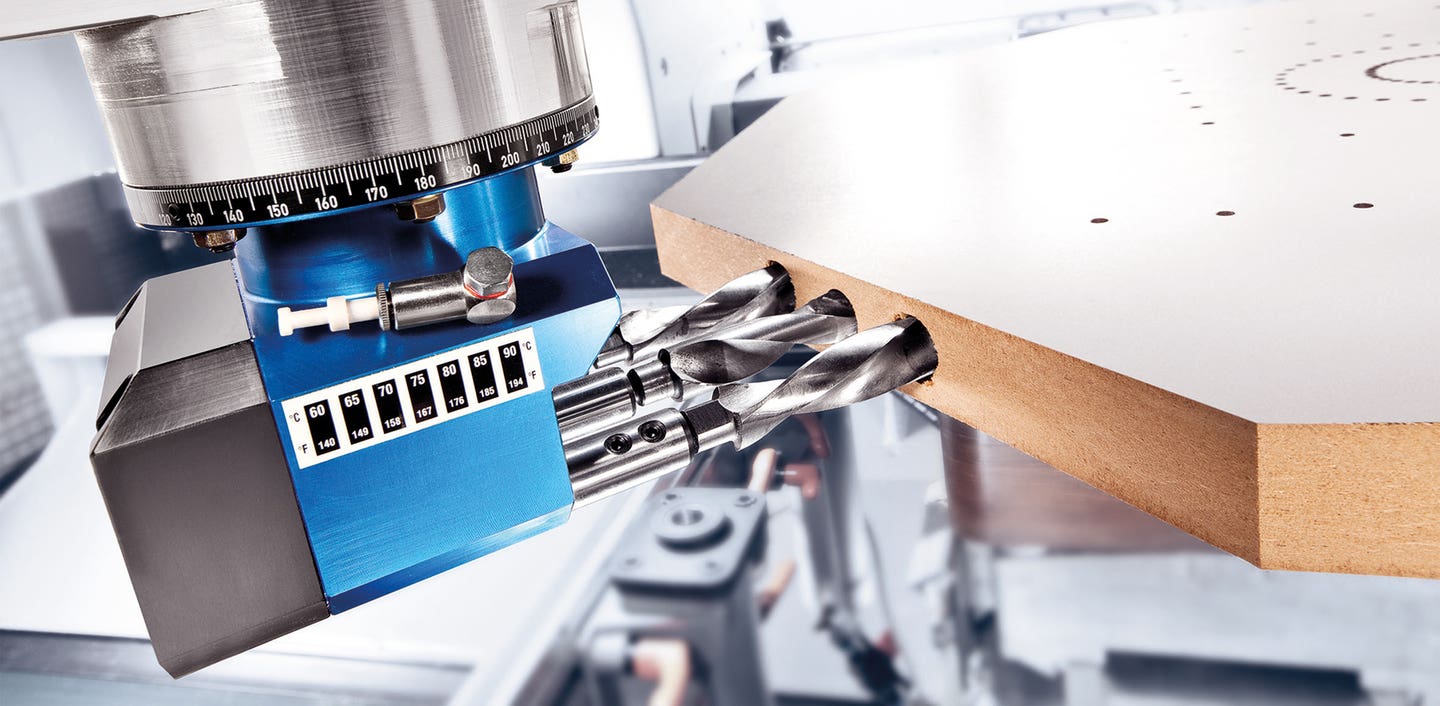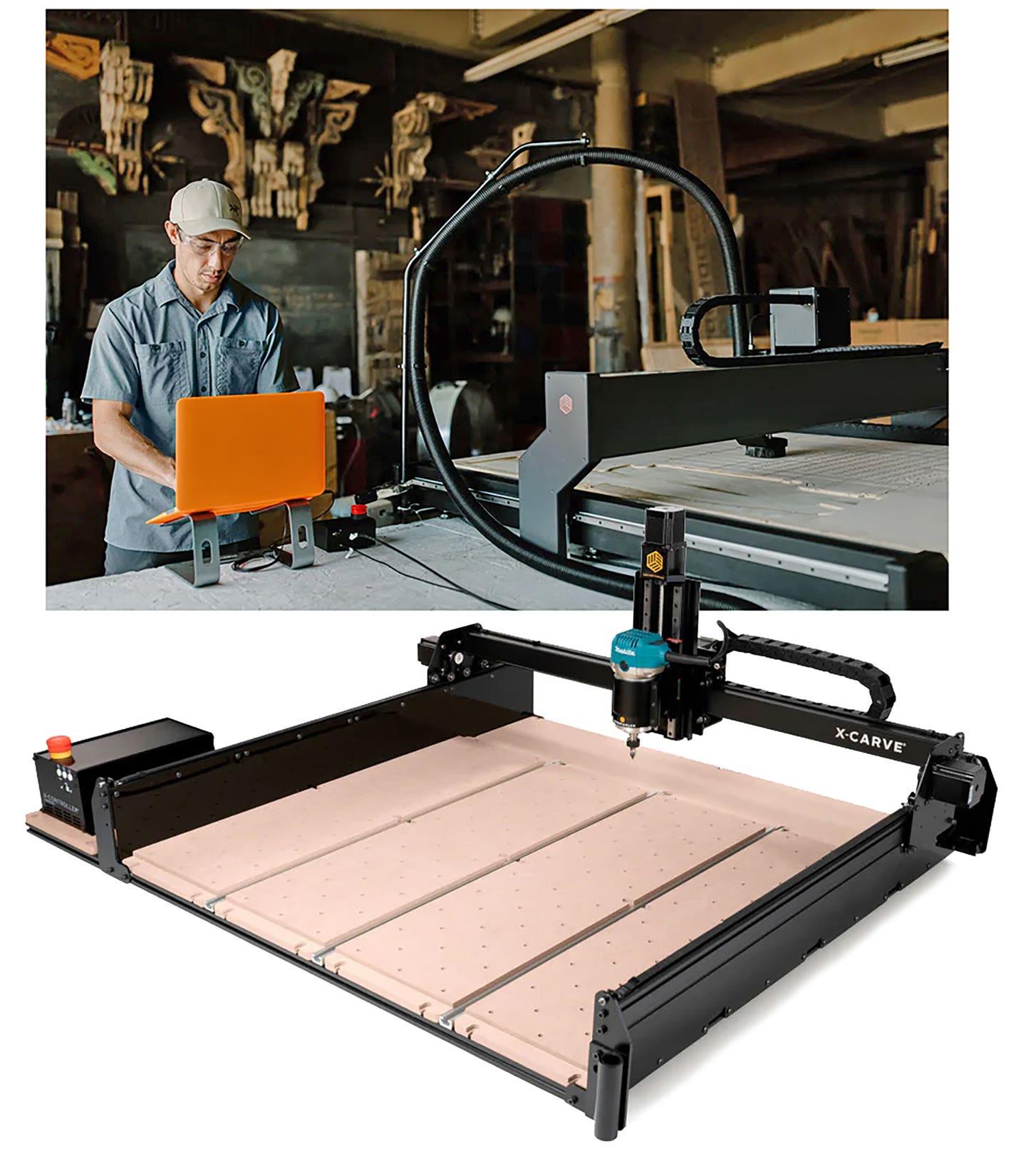Picking a pinner, nailer or stapler
Sorting through the latest functions, features and technologies available in the fastening gun category
Woodworkers looking at buying fastener guns usually have a few basic questions, the most obvious of which is whether to go cordless or pneumatic. Next up is which of the guns is going to be the most useful, and does a shop really need one of each? Then there are qualms about angles, gauge sizing, jam fixing, and a host of other concerns.
Some nailing tasks such as crown molding can involve slow and detailed work, while other jobs move fast because they don’t even need to have the heads set. But no matter what the application, using a gun is going to be faster in a production environment, and in most cases dramatically so, than driving nails with a hammer and set. A gun can shoot, set, and reload in the blink of an eye, while manual nailing and setting involves several time-consuming steps. It won’t be long before collaborative robotic arms do most of the nailing on production lines, but until then woodworkers will still need to teach new employees how to avoid splitting narrow moldings or driving long fasteners through thin stock. Part of that process is having the right tools available.
Smaller is thicker
Let’s start with gauges, as this will usually determine whether a woodshop needs a pin, brad, finish, or stapling gun.
Carpenters are used to the old penny system that is based on the length of a nail, and the girth (diameter) is a secondary concern. Nail guns are the other way around: they’re measured first according to the nail’s diameter, and then its length.
Nails range from a thick 15-gauge which is 3/40” in diameter to a thin 23-gauge that measures just 1/40” in diameter – that’s about the thickness of a thin veneer. The higher the number, the thinner the nail and the smaller the hole it leaves. A woodworker needs to use a big enough fastener to make parts stay together, but small enough so the holes made by the heads can be ignored, or at least easily filled.
A 23-gauge nail is referred to as a pin, and they’re usually headless or have such small heads that the hole they leave in the wood doesn’t need to be filled. Fine sanding and a topcoat will disguise it in most species. Pins make great clamps for small moldings: they hold the part in place while glue dries, and because they’re so thin they rarely split the wood. Unfortunately, they don’t have a lot of holding power, so most woodworkers only reach for a pin nailer when they’re working with very small parts, or they want to temporarily position something but not rely on the friction fastener to keep it in place forever.
Brad nails run from 18 to 21 gauge, and they bridge the gap between pins and finish nails. Some suppliers classify 21-gauge brads as pins or micro-brads, so it’s a subjective definition. They usually have enough of a head to hold thin moldings tight to the work, but holes left by the heads almost always need to be filled if the work will be clear coated. Thicker paint primers may fill the holes, but it’s a good idea to check for depressions with a raking light before top-coating.
Finish nails (which for traditional carpenters start at 4d) are 15- and 16-gauge for guns. Again, the smaller number is thicker. A 15-gauge gun is ideal for fastening standard 1x boards. The 16-gauge nails are a little thinner (about 1.65mm in diameter, but that can vary a little with different manufacturers), and both the nails and the guns are smaller and lighter. That makes them ideal for thinner trim or working above one’s shoulders. Both 15- and 16-gauge nails come in a range of lengths up to 2-1/2” long for most gun brands, and these are the go-to guns for most trim and finish carpentry tasks. If a finish carpenter or furniture builder could only own one size gun, a 16-gauge is probably the better choice. And if there is a choice, guns that hold nails at an angle can reach better into tight corners than guns with straight-up nail cartridges.
Cordless trends
Not so long ago, a discussion of the latest in nailers and pinners would have been restricted to pneumatic guns. Now, it’s mostly about batteries and brushless motors. The freedom offered by going cordless hits a home run with fastening tools more than most others because the woodworker isn’t just losing an electric cord but is also escaping from hauling around heavy hoses and compressors. That said, it’s still a good idea to hook up to hoses on larger projects that will require a lot of nailing, as batteries tend to drain rather quickly in guns. A lot of shops stick with hoses in the shop, and batteries on installs.
Batteries are still very brand specific, and within a brand some tools can now accept multiple voltage batteries, or even a plug-in power cord. Not making batteries universal means that the manufacturers can ‘encourage’ woodworkers to buy a whole inventory of single brand tools. Odds are that there will be adapters available soon that make the batteries interchangeable between brands, as the technologies and outputs are similar. But for now, it’s worth looking at guns for which the woodworker already owns batteries.
There are many trends in the power tool industry that are eye-catching to say the least. Flex Power Tools and DeWalt seem to be reinventing battery technology with impressive results that include a lot more power, faster charging, and longer battery life. That’s a promising direction for nail, pin and staple guns that rely heavily on both impact power and longevity to get woodworkers through a long day on the jobsite. Shops that are looking at upgrading all their cordless guns might want to ask whether stacked battery options are currently or imminently available.
What to look for
A woodworker buying a nail, pin or staple gun might want to keep a few things in mind when comparing various models and brands. Perhaps the most important feature, especially in cabinet and furniture building, is the ability to control the depth of drive. This lets the woodworker decide how far below the surface the head of the nail will be, and how much filling will be required. It varies a lot between species. It only makes sense that a gun will set a nail in balsa a lot deeper than in lignum vitae (the densest and hardest wood known), even at the same setting. There are few things as frustrating as wrapping up a nailing project only to discover that the heads didn’t seat properly, so now they all need to be set by hand. Woodworkers need the flexibility to decide on the setting on a job-by-job basis, rather than relying on factory settings.
Next up, has the gun got a built-in LED? This can make a huge difference in accuracy.
Is the gun capable of bump-firing, where the operator keeps the trigger pressed and the gun fires on contact with the wood? If so, a dry-fire lockout is even more essential than it is with sequential (standard) firing. The lockout means that the gun won’t fire on an empty cylinder and leave a dent in the work without delivering a nail. That can be especially annoying with staples, where the holes are elongated when the contact tip hits the wood. Having to go back and fire where there were no staples means that there are now two large holes to fill, often side-by-side or very close together. And avoiding the second hole isn’t easy: it’s a challenge to fire again in the exact spot where the blank hit.
A directional exhaust is a very desirable feature in a gun. It lets the operator direct the exhaust away from his/her face, which is a wonderful bonus is that face is inside a cabinet.
If the gun has a hose, make sure it has a swivel connector to avoid tangling and knots.
Finally, easy jam-clearing should be a non-negotiable option on new guns. Most models nowadays have a head that pops apart and lets the operator clear a bent nail or staple in seconds. Experienced woodworkers will attest to the hours they have spent with a needle-nose pliers trying to get a gun to run again after a fastener jammed.
This article was originally published in the March 2023 issue.







